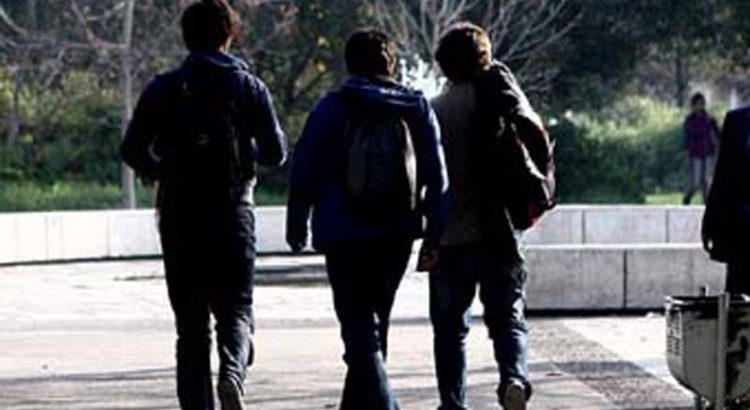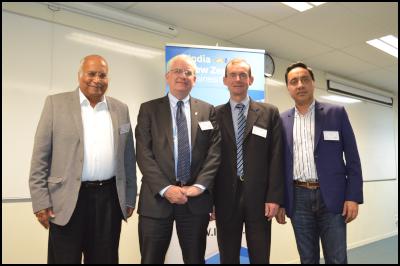Por: Álvaro Cepeda Neri
Es cierto que la ignorancia de Peña y Nuño sobre lo que les han ordenado, por medio del programa del neoliberalismo económico, es que su reforma hasta ahora para deshacerse de los maestros que no comulgan con esos fines políticos del capitalismo puesto en marcha desde 1947, cuando la fundación de la Sociedad Mont Pelerin y su punta de lanza con las oleadas de los “Chicago boys” de Milton Friedman–, trata de “educar” desde la niñez sólo para competir por la escasez de empleo utilizando las tecnologías de punta; no obstante que las escuelas mexicanas no tienen ni sanitarios, ni bebederos, ni electricidad, ni accesos para llegar donde están más de 4 millones de niños indígenas, que son atendidos por los profesores ahora combatidos por Nuño y Peña, con amenazas cumplidas de encarcelamientos, despidos y cancelación de sus pagos.
Además de supuestamente prepararlos para la “flexibilidad” y el outsourcing donde no hay seguridad social ni pensiones, para que los trabajadores de las empresas y bancos se peleen las vacantes con la zanahoria y el látigo diseñados por el FMI y BM, la OCDE y otros organismos internacionales adoradores del neoliberalismo económico. La reforma que ha estado aplicándose es una emboscada para quitar de en medio a los maestros que se han opuesto al autoritarismo de Elba Esther Gordillo-SNTE y de Salinas, Zedillo, Fox y Calderón; y que están llevando a sus últimas consecuencias Peña-Nuño, los empresarios de “Mexicanos primero” y los “analistas que impulsan la privatización de la educación pública, gratuita y laica, con la bendición de José Ángel Gurría, los del ITAM y el Tecnológico de Monterrey, particularmente. Y los Gilberto Guevara que transitaron del comunismo al capitalismo de los Friedrich A. Hayek a Milton Ftiedman y los Pinochet, cuya reforma educativa está siendo combatida en Chile por los estudiantes contra la exsocialista Bachelet.
Para rastrear ese programa educativo hay varios textos disponibles: Varios autores, Conferencia de Mont Pelerin; Centro de Estudios Públicos, Christian Laval, La escuela no es una empresa, Paidós; B de Sousa Santos, Globalización y educación, Miño y Dávila, editores; M Carnoy, Globalización y reforma educativa; Esco J Varea, Las Reformas educativas, editorial debate. Y, sobre todo, los ensayos de Pilar Carrera y Eduardo Luque: Nos quieren más tontos: La escuela según la economía neoliberal. Editorial El viejo topo. Y con esta información ubicar a Peña y Nuño, quienes están dispuestos a “recurrir al uso de la fuerza” (El Universal, 16 de agosto de 2016), para imponer esa reforma; como lo dijo el inquilino de Los Pinos ante su locutor López Dóriga, al que fue a despedir y agradecer su apoyo, para que con Televisa, Monex y la complicidad de Calderón, hacerse del cargo presidencial.
Solamente que Peña guarda silencio sobre por qué, con Nuño y Juan Díaz de la Torre-SNTE, la citada reforma “no se cancela y menos habremos de claudicar a la implementación de la misma”. Y Peña, después de Nochixtlán, aseguró que “el gobierno de la República no tendrá reparo alguno, no tendrá reserva alguna en recurrir al uso de la fuerza pública para poner orden y, sobre todo, para hacer valer el Estado de Derecho”. Ésta no es una advertencia. Es una amenaza que Peña cumplirá para matar y encarcelar a los profesores de la CNTE, corriendo el riesgo de encender la mecha del descontento social.
No se trata de enseñar a pensar, sino a repetir. “El empleo flexible y aprendizaje (en automático digitalizado) son dos nociones complementarias e imprescindibles para el capitalismo de nuevo cuño (el neoliberalismo económico). Este nuevo modelo (como lo está planteando Nuño) presupone que los individuos se tomen su formación en serio bajo la amenaza del mercado. Atreverse a pensar, discutir y disentir no va con ese neoliberalismo antidemocrático… “modelo educativo neoliberal (que) se caracteriza por su adaptación a un sistema socioeconómico en mutación constante, más que por una teoría psicopedagógica fundamentada en el ser humano”. Se trata de “el uso y abuso de los test de rendimiento y proliferación de evaluaciones… que no son para el incremento de la calidad educativa… y que el nuevo modelo requiere como una de las condiciones básicas, que el Estado deje de entender la educación como un servicio público”.
Se trata, pues, de ir poniendo las condiciones para la privatización de la educación, por órdenes del FMI y del Banco Mundial con sus anexos internacionales. Poner a los niños para el aprendizaje del neoliberalismo económico es el objetivo de Nuño-Peña. Lo grave es que autoritariamente oculte esa finalidad y con el apoyo de los Claudio X. González estén engañando, escudándose en los niños a los que quieren llevar al sometimiento por la vía de educar para repetir lo que diga –sin crítica– la digitalización. “La privatización, la evaluación, son herramientas que apuntan en esa dirección… y un ataque al Estado de Bienestar y el mercado como método normalizador de la educación, dictando a las instituciones de enseñanza (de primaria), tanto los contenidos como las formas de aprendizaje, que permitan a sus poseedores la flexibilidad y la adaptación que el mercado del trabajo, ya ahora mismo, pero más en el futuro inmediato, exigen”.
Fuente: http://insurgenciamagisterial.com/lo-que-no-dijo-pena-de-su-reforma-educativa-ordenada-por-el-neoliberalismo-economico/
Imagen: http://insurgenciamagisterial.com/wp-content/uploads/2016/10/contralinea1.jpg













 Users Today : 58
Users Today : 58 Total Users : 35403396
Total Users : 35403396 Views Today : 67
Views Today : 67 Total views : 3332693
Total views : 3332693